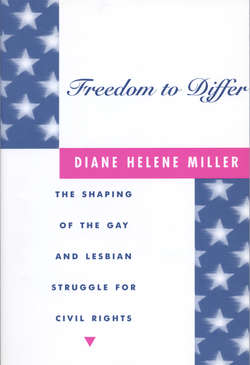Читать книгу Freedom to Differ - Diane Helene Miller - Страница 15
На сайте Литреса книга снята с продажи.
Gay Studies
ОглавлениеGay scholarship would seem an obvious place to start looking for work on lesbians. The term gay, like the more clinical designation homosexual, ostensibly refers to both men and women with an erotic or affectional orientation toward members of their own sex, while gay liberation refers to the attainment of freedom and equality for all such individuals. However, many books that claim to focus on “gay” issues in fact concern themselves solely with men or incorporate only a passing claim to inclusivity, with no real attention to lesbian specificity. With few exceptions (see Altman 1982), books written by gay men have been singularly inattentive to the experiences and problems of lesbians (Edwards 1994).10 In other minority cultures whose men and women establish primary, intimate relationships, the writing of men often abounds with images of their female counterparts, however stereotyped, objectified, or idealistic. In contrast, the writing of gay men is at times devoid of any awareness of, or reference to, lesbians and their lives. Thus, while the writing of other groups of men is prone to objectifying or fetishizing women in a manner that highlights their “Otherness,” the writing of gay men is often guilty of precisely the opposite offense: the erasure of lesbian specificity or difference, brought about by the mistaken belief that lesbians suffer from forms of oppression and, consequently, have needs and objectives that are identical to those of gay men.
On the one hand, therefore, gay scholarship is largely unhelpful in offering insight into the lives, experiences, and concerns of lesbians, including concerns surrounding identity and representation. On the other hand, such work cannot simply be dismissed. Many of the issues of discrimination faced by gay men and lesbians are similar, and the lesbian and gay rights movement has attempted at some levels to coordinate efforts among gay men and lesbians for common gains. Moreover, and perhaps most important, gay men and lesbians often remain undifferentiated in public discussions. This is true for many supporters as well as for those who would perpetrate violence against us (Phelan 1993). For these reasons, it is crucial that we acknowledge the ways in which gay male perspectives have shaped and continue to shape the lesbian and gay rights movement and in which gay male interests and images have reached the dominant culture, to a much greater extent than have lesbian concerns or representations.
Investigating lesbian representations provides an avenue for exploring the role of voice and visibility for gay men as well. Men who transgress traditional masculine gender expectations are often subject to greater censure than are women who are perceived as imitating men. For example, it is relatively acceptable and even stylish for a woman to dress in men’s clothing, including such traditional male apparel as a suit and tie. In contrast, men who dress in women’s clothing are swiftly and strongly reproached. The hatred of gay men is a fear of men who behave “as women.” Such men are seen as subjecting themselves sexually to another man, allowing themselves to be objectified, penetrated, and thus possessed by a man in the way that is expected of women. Where lesbians are hated for their strength, gay men are hated for their perceived weakness. Where lesbians are feared for their power, gay men are despised for occupying a position of powerlessness and thereby raising the possibility that any man might occupy such a position. Analysis of lesbian representations provides a much-needed link between feminist theory and gay studies, between two groups who too often fail to recognize the resemblance between their situations, either theoretically or materially.
